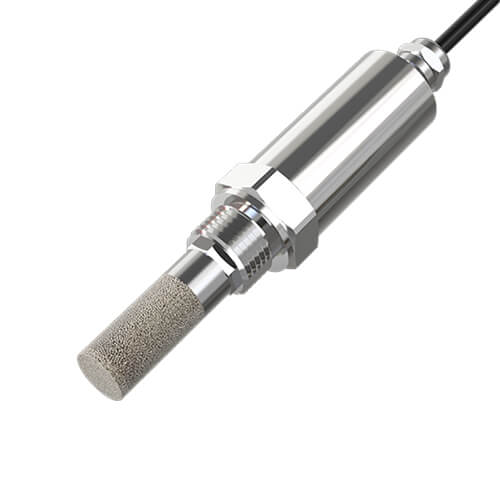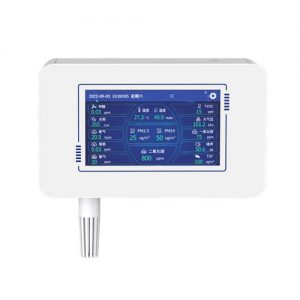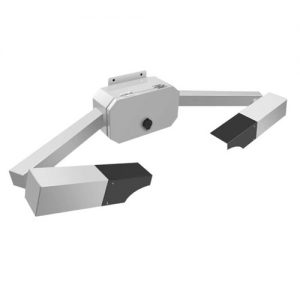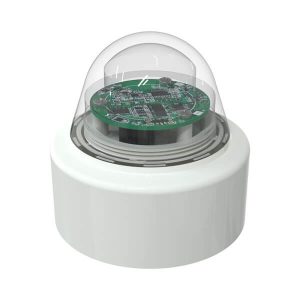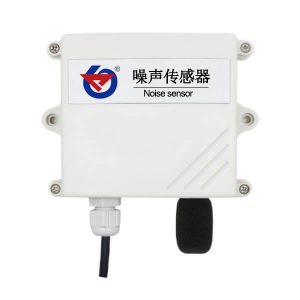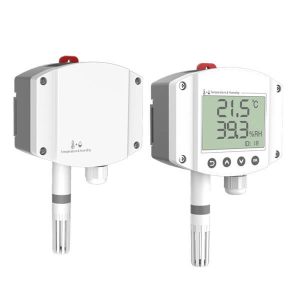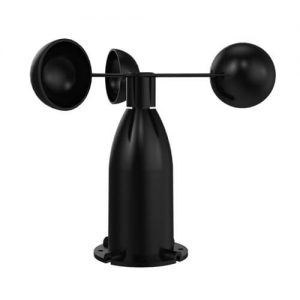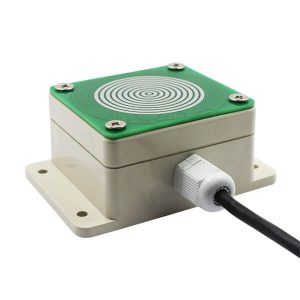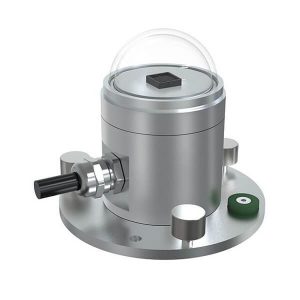Table of Contents The dew point depends on how much water vapor is present in the air. If the air is very dry with few
Dew Point Sensor
Monitoring the dew point of compressed air or gas systems can prolong the lifespan of equipment and reduce maintenance costs. Therefore, installing dew point sensors can provide accurate dew point measurements for the pipelines in your factory. Our dew point sensor series includes two types: RS-DEW-N01-2-*-EX Dew Point Sensors and RS-DEW-N01-S-EX Dew Point Sensors. The first one is designed for atmospheric environments, while the second dew point sensor is suitable for most dew point measurement applications, such as compressors and dryers.
- Model: RS-DEW-N01-2-*-EX/RS-DEW-N01-S-EX
- MOQ: 1 PCS
- Delivery date: within 24 hours
- Price:$25.2/$167.7
Renke Dew Point Sensors
Dew point is the lowest temperature at which water vapor is allowed to remain in a gas without condensing into a liquid. As the temperature of air or gas decreases, its capacity to hold water vapor decreases until it becomes fully saturated, and below this dew point temperature, water droplets will begin to form. Typically, a dew point sensor is installed downstream of a dryer to provide information when the dryer starts to malfunction and moist air enters the distribution system. When the dew point reaches a preset value, an alarm is triggered, notifying professionals to take swift action. This can save significant costs resulting from damage and production losses caused by water ingress.
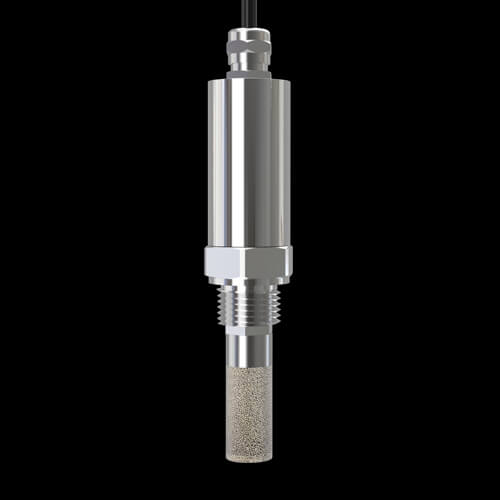
RS-DEW-N01-S-EX
This dew point sensor features a 304 stainless steel housing with waterproof treatment at the cable exit point, making it suitable for environments with higher humidity levels. It has an IP65 protection rating. The circuitry incorporates an industrial-grade microprocessor chip and a high-precision temperature sensor, ensuring excellent product performance. The dew point sensor has an elegant appearance and compact dimensions, making it suitable for various industrial environments. It outputs signals in RS485 format using the standard Modbus protocol, providing support for secondary development. This dew point sensor is primarily used for measuring the dew point within pipelines.
| Power Supply | DC 10-30V | |
| Max. Power Consumption | 0.4W | |
| Accuracy | Dew Point | ±0.8°C (25°C) |
| Temperature | ±0.4℃ (25℃) | |
| Operating environment | -40℃~+60℃, 0%RH~95%RH (Non Condensation) | |
| Dew Point Range | -30℃-100℃ | |
| Dew Point Resolution | 0.1℃ | |
| Temperature Resolution | 0.1℃ | |
| Refresh Time | 1s | |
| Long-term Stability | Temperature | ≤0.1℃/y |
| Response Time | Temperature | ≤25s(1m/s Wind Speed) |
| Output Signal | RS485(ModBus Protocol) | |
| Installation | G1/2 Thread Installation | |
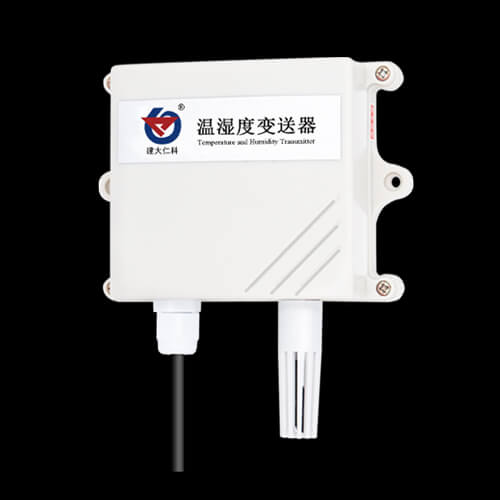
This dew point sensor integrates internal temperature and humidity sensors, calculating the dew point value by measuring the temperature and relative humidity in the air. Therefore, it can output three values: temperature, relative humidity, and dew point. It is designed for wall-mounted installation and can measure atmospheric dew points. The waterproof treatment of the housing ensures a long service life. It offers two signal output options: RS485 and WiFi. It is widely used in various locations where dew point temperature and temperature-humidity monitoring are required.
| Power Supply | DC 10-30V | |
| Max. Power Consumption | 0.4W | |
| Accuracy | Relative Humidity | ±3%RH(60%RH,25℃) |
| Dew Point | ±1℃(25℃) | |
| Temperature | ±0.5℃(25℃) | |
| Operating environment | -40℃~+60℃, 0%RH~95%RH (Non-condensing) | |
| Dew Point Resolution | 0.1℃ | |
| Temperature Resolution | 0.1℃ | |
| Humidity Resolution | 0.1%RH | |
| Refresh Time | 1s | |
| Long-term Stability | Relative Humidity | ≤1%RH/y |
| Temperature | ≤0.1℃/y | |
| Response Time | Relative Humidity | ≤8s(1m/s Wind Speed) |
| Temperature | ≤25s(1m/s Wind Speed) | |
| Output Signal | RS485(ModBus Protocol) | |
FAQS
Industrial compressed air and gas systems can be directly damaged due to water contamination or subsequent freezing and expansion of water. The presence of water vapor in the air or gas can also affect process or product quality. It is common practice to remove water contamination through filters and drying systems, but due to the dew point (and potential destructive condensation) varying with pressure changes, the risk of damage to the entire factory can also differ.
Medical and Respiratory Air
When it comes to most regulations for medical gases and respiratory air, dew point monitoring is necessary to ensure compliance and safe breathing conditions for everyone from patients to firefighters.
Plastic Drying
Maintaining adequate dryer performance prevents material waste and production downtime while ensuring product quality.
Food and Pharmaceutical Industry
Many applications in the food and pharmaceutical industry use compressed air. Standard applications include coating quality control, filling, and packaging.
Rail Transportation
Brakes, doors, and air conditioning systems on trains, buses, and other public transportation vehicles rely on dew point measurements in compressed air to ensure safety and reliability.
Dew point is typically measured using a dew point sensor or hygrometer. There are several methods to measure dew point, including: Chilled Mirror Hygrometer, Capacitive Hygrometer, Resistive Hygrometer, Infrared (IR) Hygrometer, Psychrometric Charts,Electronic Sensors
Dew point sensor is a specialized instrument used to measure the dew point temperature in a gas or air mixture.
Working principle: When the ambient temperature falls below the dew point, water vapor in the air condenses into liquid. Conversely, when the ambient temperature is above the dew point, the air contains saturated water vapor and forms dewdrops. In an environment with a relative humidity of 100%, the water vapor content in the air is directly proportional to the humidity of the ambient air.
The data sheet for the dew point transmitter will provide you with the accuracy specifications. This is usually given as a range – for example ±0.8°C. This means that the sensor accuracy is expected to be within plus or minus 0.8 °C of the actual dew point.
Dew point is an absolute measurement, while humidity is a percentage. Therefore, dew point is considered a more accurate method of measuring air humidity and comfort. Additionally, humidity depends on air temperature, while dew point does not.
Popular Weather Sensors
Table of Contents What is a vibration sensor? Vibration sensor is a device that measure the vibration speed and frequency of mechanical motion and convert
What is dissolved oxygen? Dissolved oxygen (DO) refers to molecular oxygen dissolved in water. The unit is mg/L, which means how many milligrams oxygen in
Table of Contents What are meteorological sensors? Meteorological sensors are specialized equipment for understanding and measuring climate change. These sensors are often mounted in combination
The main purpose of environmental monitoring is to provide data on environmental quality and changing trends to ensure the safety of public life and property.
The weather sensors are the sensing end of the weather station and collect various weather-related data. The weather station can obtain the main parameters and
Table of Contents Water is the source of life, and human beings cannot do without water in life and production activities. The quality of drinking
Table of Contents What is a water level sensor? The water level sensor is a device that measures the liquid level in a fixed container

